What treatment options are available for lung cancer?
The following options may be included for lung cancer treatement.

Surgery
Surgery is mainly used to treat NSCLC when it is at an early stage (Stage 1–3) and has not spread to other areas of the body. There are different types of surgery, and the type you have depends on the type, size and position of the cancer, whether it has started to spread and your general health. The surgeon will remove the tumour, some normal tissue around it and usually the surrounding lymph nodes. Types of surgery that you may have include:
- Lobectomy involves the removal of 1 lobe of the lung (the right lung has three lobes and the left lung has two).
- Bilobectomy involves the removal of two lobes of the right lung.
- Wedge resection surgery removes the tumour and a triangle-shaped wedge of the lung around it from one or more lobe (but does not involve the removal of a whole lobe or lobes).
- Segmentectomy removes a larger section of a lobe than wedge resection, but not a whole lobe.
- Sleeve resection involves removing part of the main airway (also known as the bronchus) and part of a lobe if necessary.
As with all treatments, you may experience side effects after having surgery. These can include tiredness, blood clots, collapsed lung, chest or lung pain, depression, anxiety and heart problems.
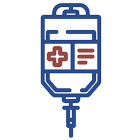
Chemotherapy
Chemotherapy medicines target and kill rapidly dividing cells like cancer cells. One or more medicines can be given at once and they travel around your body in your bloodstream.
Chemotherapy is usually given through a drip, central line or port catheter into a vein in your arm, hand or chest, but is sometimes given as capsules that you swallow. Treatment sessions usually take place every 3–4 weeks.
Because chemotherapy medicines target any cell in the body that is dividing rapidly, not just cancer cells, they often have side effects. These can include tiredness, a sore throat, cough, sickness, hair loss, nerve damage, breathlessness and loss of appetite.
If radiotherapy is part of your treatment plan, you will usually have chemotherapy before radiotherapy treatment, but it can be given at the same time.
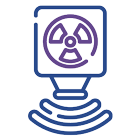
Radiotherapy
Radiotherapy uses high-energy X-rays (a type of radiation) or other types of radiation to help kill cancer cells or stop them from growing. If you are referred for radiotherapy treatment you will have several treatment sessions (each taking around 10–15 minutes) over several weeks.
Radiotherapy treatment usually (but not always) takes place after a person has finished a course of chemotherapy because it can kill cancer cells that have not been killed by the chemotherapy.
Special types of radiotherapy include:
- Stereotactic ablative body radiotherapy (SABR) gives focused doses of radiation to a very small area of the body. Because it is very precise a much higher dose of radiation can be delivered to the tumour than is delivered by conventional radiotherapy.
- Stereotactic radiosurgery (SRS) and stereotactic radiotherapy (SRT) deliver high doses of radiation to small targets in the brain.
Possible side effects from radiotherapy include tiredness, skin reactions, nausea, cough, a sore throat and difficulty swallowing.
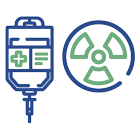
Chemoradiotherapy
Chemoradiotherapy (also called chemoradiation) combines chemotherapy and radiotherapy together. You might be offered chemoradiotherapy if you have Stage 2 or 3 NSCLC that can’t be removed by surgery or SCLC at a very early stage.
Your general health usually needs to be good for you to be offered chemoradiotherapy because of the likely severity of the side effects. These can include breathlessness, cough, a sore throat, nausea and tiredness.

Targeted therapy
Targeted therapy targets the differences between cancer cells and normal healthy cells that help cancer cells divide and survive. For example, some NSCLCs have mutations (changes in the information or ‘code’) in genes.
The faulty proteins that are made from these mutated genes can be specifically targeted by medicines that only block their activity, stopping them from signalling to cancer cells to divide and grow.
Targeted treatments often cause fewer side effects than chemotherapy treatment where the medicine travels all over the body because they have less of an effect on normal, healthy cells.
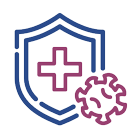
Immunotherapy
The immune system protects your body from things that can make you ill, like bacteria and viruses. Immunotherapy uses medicines to help the immune system to recognise, target and kill cancer cells that contain specific immune markers or have them on their surface.
Immunotherapy is usually offered after surgery, chemotherapy or radiotherapy. It is given through a drip into your chest or a vein in your arm. You will usually receive treatment every 2–4 weeks for up to 2 years.
As with other cancer treatments there are side effects. These may include tiredness, skin reactions, joint pain, breathlessness, nausea, diarrhoea and loss of appetite.
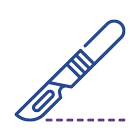
Ablation
This type of treatment is sometimes used to treat early-stage lung cancer. It does not involve surgery and instead uses heat or extreme cold to kill cancer cells. Radiofrequency ablation uses heat made by radio waves or high-energy microwaves to kill the cells in a tumour. Cryoablation uses cold therapy and liquid nitrogen or argon gas to freeze and kill them.
Side effects may include tiredness, low-grade fever, collapsed lung, chest wall pain and coughing up blood. In some cases, surgery may be required if the lung is leaking air.

Laser therapy
Laser therapy for lung cancer involves using a concentrated beam of light to treat tumours in the lungs. The intense light is directed at the cancerous cells, either shrinking or eliminating them. Laser therapy uses a focused beam of light to remove or kill cancer cells.
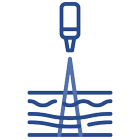
Photodynamic therapy
Photodynamic therapy includes a special drug that is activated by exposure to light. This activated drug helps to kill cancer cells using a very bright light in combination with the light-sensitising medicine. Side effects can include sensitivity to light, coughing up blood, throat or chest pain, and nausea.
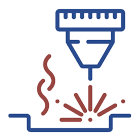
Diathermy (electrocautery)
Diathermy, also called electrocautery, might be offered if your cancer is making it difficult to breathe. A probe is inserted into the tumour and an electrical current is used to kill cancer cells.
Side effects can include coughing up blood and a sore throat.


